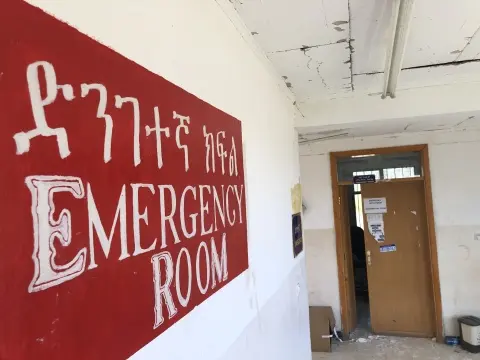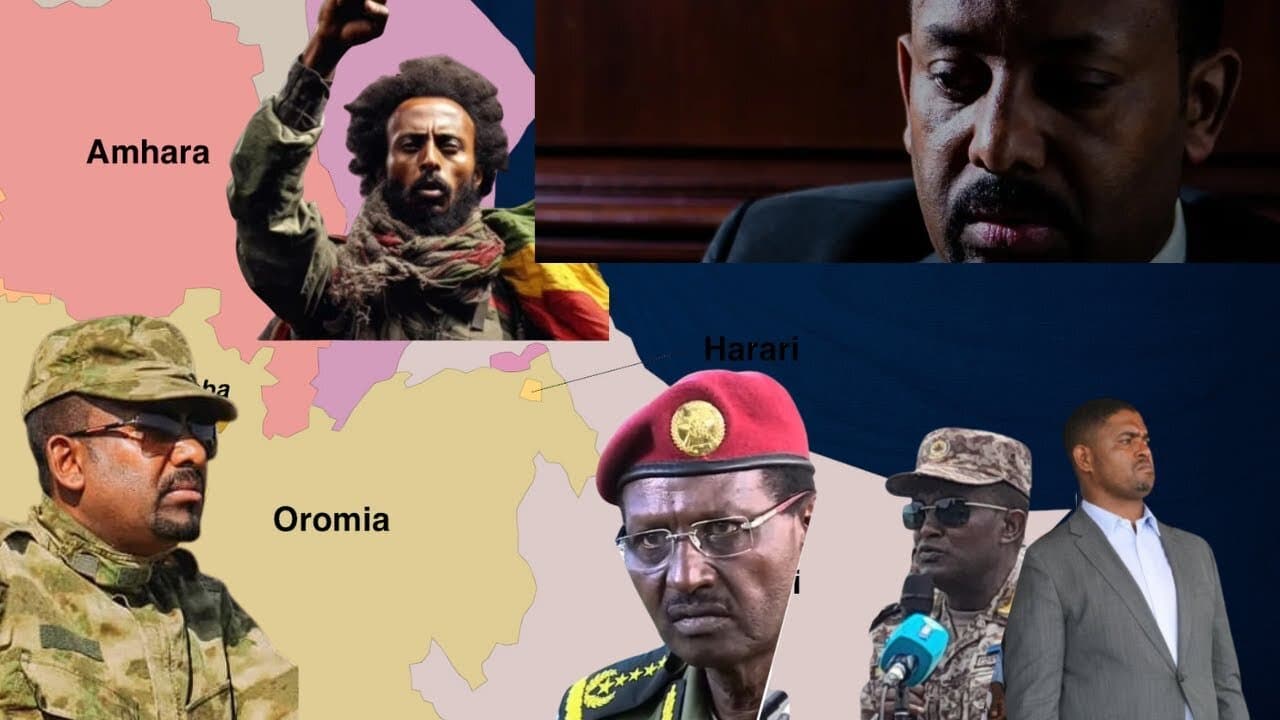Tsegaye Tegenu, PhD
2024-07-04
In parts thirteen, fourteen, and fifteen, we discussed the vision and mission statements and analyzed the current situation of the country that led to their formulation. However, a powerful and effective vision and mission are not enough by themselves. A long-term development plan requires further details about goals, fundamental pillars, objectives, policy areas, and strategies.
Goals translate the vision into specific, measurable outcomes, providing clarity on what the organization or nation aims to achieve over the long term. In this section, we will discuss goals (see below).
Next comes fundamental pillars or sub goals that identify the core areas that need to be strengthened to achieve the goals. They ensure that all critical aspects are addressed and aligned with the vision.
Following the pillars, comes objectives which are specific, actionable steps that outline how each goal will be achieved. They provide a detailed roadmap and criteria for success.
Objectives are followed by policy areas. They define the domains where specific actions and regulations are needed to support the objectives. They ensure that all relevant sectors are considered and integrated into the plan.
Finaly, we have strategies which outline the specific methods and initiatives that will be implemented within each policy area to achieve the objectives. They provide actionable plans and ensure coordinated efforts.
These components and structure are necessary because they provide, clarity, focus, measurability, coordination and accountability ensuring that all efforts are aligned and directed towards the desired future state. In this case, towards creation of post-scarcity economy, thriving middle class and self-reliant society.
Airlines flight from Los Angeles to Addis Ababa
What we are discussing is not just a theory or abstract concept. I want to explain the structure and sequence of the components of a long-term national development plan using the analogy of planning a vacation abroad. Suppose I have convinced you to take a trip to Addis Ababa instead of Bangkok, Bali, or Sydney. This means you have accepted and embraced the vision of ‘Creating a Post-Scarcity Economy, Thriving Middle Class, and Self-Reliant Society.’
While your preference to travel to Addis Ababa is desirable in many ways, a successful and safe journey requires a detailed operational plan. Let’s use the analogy of an Ethiopian Airlines flight from Los Angeles to Addis Ababa to explain the structure of a well-planned long-term development plan.
- Vision (the ultimate destination): Arriving at Bole International Airport in Addis Ababa. The vision is like the final landing at your destination airport. It represents the long-term aspiration and desired future state of the country. For example, “Creating a Post-Scarcity Economy, Thriving Middle Class, and Self-Reliant Society” for Ethiopia.
- Goals (major checkpoints along the journey). These are key stopovers during the flight for the purposes of refueling stops and/or layovers. Goals are significant milestones that need to be achieved to reach the ultimate destination. They break down the vision into more specific, manageable components (see below).
- Fundamental pillars (main routes to reach each checkpoint). These are the flight paths or airways followed by the aircraft. Fundamental pillars are the key components or thematic areas essential for achieving the goals. They represent the main routes or strategies that support progress towards each goal. For example, infrastructure development, human capital development, and governance are critical areas that facilitate reaching economic growth, improved healthcare, and enhanced education (the details will appear in part seventeen).
- Objectives (navigation points along the main routes). They refer to specific navigation beacons or GPS coordinates along the flight path. Pilots of aircraft are equipped with latitude/longitude coordinate navigation capability for flight plans. Similarly SMART objectives serve as navigation points that help track whether you are on the right path to your checkpoints (goals). For instance, achieving a certain GDP growth rate, increasing healthcare access, or improving education enrollment rates are specific indicators of progress (details will appear in part eighteen).
- Policy Areas (air traffic control regions). Different air traffic control regions you pass through, requiring specific communication and coordination. Policy areas are specific domains or sectors that require targeted actions and interventions to support the fundamental pillars and achieve the objectives. They represent different aspects of society and the economy that need to be addressed. Examples include transportation, health, education, and the environment.
- Strategies (flight maneuvers and adjustments within each region). Specific flight maneuvers, altitude adjustments, and speed changes within each air traffic control region. Strategies are the specific plans and actions needed within each policy area to achieve the objectives. They provide detailed directions on how to navigate each region effectively. For example, implementing specific infrastructure projects, health initiatives, and education reforms are strategic actions that help achieve the objectives within their respective policy areas.
By following this structured approach, a well-planned long-term development plan ensures that all efforts are systematically aligned towards achieving the vision, just as a well-planned flight ensures you reach your final destination efficiently and effectively.
What happens if the flight is not properly planned
If something is wrong with the structure of a long-term development plan, several issues can arise that can hinder the achievement of the vision (arriving Addis Abeba). If you do not have a clear flight path (right vision), this is like having the plane wandering off course and potentially getting lost. If goals, objectives, and strategies are not be aligned with the vision, it means you are having a flight plan that takes you in the wrong direction, away from your destination.
If the fundamental pillars and policy areas might not address the most critical needs or opportunities, it means you are like diverting fuel and crew to unnecessary detours, risking the plane running out of fuel before reaching the destination. If objectives are not SMART, it means you are not having checkpoints or progress markers on the flight, leading to uncertainty about the flight’s progress and position. If strategies across different policy areas are not coordinated, you may have multiple navigation systems on the plane that do not communicate, causing confusion and potential collisions.
A well-structured long-term development plan is crucial for achieving a nation’s vision efficiently and effectively. If the structure is flawed, it can lead to misdirection, inefficiencies, and wasted resources. So, our discussion about theory and concepts is not a joke.
You cannot create a well-structured long-term development plan by just layering and patching together existing policies. A well-structured long-term development plan requires a systematic approach that integrates vision, goals, pillars, objectives, policy areas, and strategies into a cohesive framework. This ensures that all efforts are aligned, resources are effectively allocated, and progress is continuously monitored, leading to sustainable and inclusive development. Turning now to goals, whose identification depends on understanding underlying causes the current situation (see Part Thirteen).
Goals for the vision of “Creating a Post-Scarcity Economy, Thriving Middle Class, and Self-Reliant Society”
Goal 1: Transforming and Building the Economic Structure
This goal focuses on modernizing and diversifying the economic base, moving away from traditional and often stagnant sectors (subsistence agriculture and informal economy) to more dynamic and high-value industries. The purpose is to ensure sustainable economic growth through diversification and modernization and creation of a robust and resilient economy capable of withstanding global market fluctuations.
A transformed economic structure is crucial for creating high-paying jobs and increasing the standard of living. It fosters innovation and competitiveness, essential for long-term prosperity.
Goal 2: Entrepreneurship Building and Business Growth
This goal aims to nurture entrepreneurial skills and support the growth of new and existing businesses. It stimulates innovation and drive economic growth through the creation of new enterprises. It focuses to create a conducive environment for small and medium-sized enterprises (SMEs) to thrive.
Entrepreneurship is a key driver of job creation and economic dynamism. It empowers individuals, promotes self-reliance, and can lead to significant technological and social advancements.
Goal 3: Fostering a System of Economic Abundance
This goal is about creating a system where resources are plentiful, and everyone has access to the essentials needed for a high quality of life. It aims to ensure that the basic needs of all citizens are met, reducing poverty and inequality. It helps to build an economy where abundance leads to widespread prosperity and well-being.
A system of economic abundance reduces social tensions and creates a stable and harmonious society. It supports the vision of a thriving middle class by providing ample opportunities for all.
Goa 4: Spatial Transformation and Integration
This goal involves reorganizing and integrating urban and rural spaces to promote balanced development and connectivity. It aims to reduce regional disparities by ensuring equitable development across all areas. It focuses on improving infrastructure and connectivity, enhancing access to services and opportunities.
Spatial transformation leads to more efficient use of resources and better quality of life. Integrated development ensures that no area or community is left behind, fostering national unity and social cohesion.
Goal 5: Creating Strong Institutional Frameworks
This goal focuses on building effective, transparent, and accountable institutions that support economic and social development. One of its purposes is to create a solid foundation for governance, ensuring the rule of law and efficient public services. Another purpose is to foster trust and confidence in public institutions.
Strong institutions are essential for maintaining social order and economic stability. They ensure that policies and programs are effectively implemented, leading to sustainable development.
Goal 6: Ensuring Adequate Standard of Living
This goal aims to provide all citizens with a decent standard of living, including access to quality healthcare, education, and housing. It targets to eradicate poverty and improve the overall quality of life for all citizens. It has also an intention to create a social safety net that supports vulnerable populations.
Ensuring an adequate standard of living is fundamental to achieving a self-reliant society. It promotes social equity and inclusion, which are vital for a cohesive and prosperous society.
Conclusion
Each of these goals is interconnected and collectively contributes to the vision of creating a post-scarcity economy, a thriving middle class, and a self-reliant society. By transforming and building the economic structure, fostering entrepreneurship, ensuring economic abundance, promoting spatial integration, building strong institutions, and ensuring an adequate standard of living, the country can create a sustainable and inclusive environment where all citizens have the opportunity to thrive and prosper.



Mr. copycat Frame work aka Abo Tsegaye
What is wrong with you? Do you have any friend or family who can tell you to stop copying and pasting the Ferenji textbooks on the Habesha while the country is in blood bath?
Dear countryman Dr. Tsegaye bin Tegenu,
Please don’t be dismayed or distracted by loser detractors.
Meanwhile, I would like to see you also taking about system of governance that may be the most applicable to the old country considering it is a pot many cultures. I am confident in your intellectual horsepower to educate us on the two forms of governance historically available. A republic or democracy? I am sure you know about the many public outbursts that country has gone through since February 1974 and what that created. I eagerly look forward to your educated opinion.
Blessings to you and your family.
Make that:
Meanwhile, I would like to see you also talking about system of governance that may be the most applicable to the old country considering it is a melting pot of many cultures. I am confident in your intellectual horsepower to educate us on the two forms of governance historically available. A republic or democracy? I am sure you know about the many public outbursts that country has gone through since February 1974 and what that created. I eagerly look forward to your educated opinion.
Blessings to you and your family.